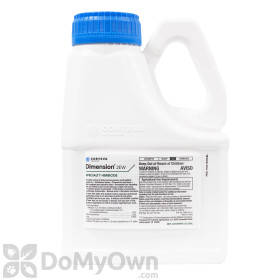Which Dallisgrass Killer Methods are Best?
Dallisgrass is a common sight across Texas and most of the Southeastern United States. It was originally introduced to the U.S. intentionally as forage in the late 1800s, probably somewhere around New Orleans, Louisiana. The weed quickly spread West through Texas and East through other states with hospitable levels of moisture and warmth for these tall stalks to grow freely.
Let's get into some details below about how you can eliminate this stubborn weed with a post-emergent herbicide product.
Pre-Emergent Weed Prevention
Each stalk of dallisgrass in an area produces multiple spikes that produce multiple rows of seeds. These seeds can easily be spread by the wind, by sticking to passing animals, or when making contact with tools. To prevent all those seeds from germinating, a pre-emergent herbicide that's labeled for use on dallisgrass is one of the best options available.
- You will need to apply pre-emergent products before dallisgrass seed germination occurs. Dallisgrass usually sprouts in the later spring and into the summer when soil temperatures are between 60 and 65 degrees Fahrenheit. Your local extension office can give you tips on when to apply pre-emergents in your area.
- Choose a product labeled for control of dallisgrass.
- Multiple or split applications of a pre-emergent are often recommended for dallisgrass prevention. Making split applications in the spring (usually 5-10 weeks apart) and another application in the fall can offer the most effective ongoing coverage.
- Pre-emergents applied to stop dallisgrass may need to be watered into the soil completely to be effective against this unwanted weed. Read the entire label and follow directions carefully.
Products needed for Step 1
Apply A Post-Emergent Dallisgrass Herbicide
If dallisgrass is already present in your lawn or other property, you'll need to take action with a post-emergent weed killer that is labeled for use against dallisgrass. While this weed has some similarities to crabgrass, you must confirm that any product is labeled for dallisgrass use before applying.
Follow these tips for the most successful post-emergent weed-killer application:
- Treat dallisgrass plants early in their growth cycle. Dallisgrass can grow quite tall (up to 5') and is much easier to control when the stalks are younger.
- The treatment area may have to be watered before application to prevent damage to grass; follow the instructions on the label.
- Some dallisgrass preventer products are not labeled for control but only suppression of this weed and will require several applications to achieve full control of the weed infestation.
- You may need to avoid mowing before or after application to achieve the best results. Most post-emergent products recommend allowing two full days after application before mowing.
- Read the product label very carefully and ensure you have chosen the right product that is safe for your lawn.
Pro Tip
Some dallisgrass control products such as MSMA Target are restricted to commercial use and are not suitable for residential lawn treatment.
Products needed for Step 2
After you have removed dallisgrass from your lawn, learn how you can prevent further infestations with our Dallisgrass Prevention Guide. Click the right arrow below to read more.









